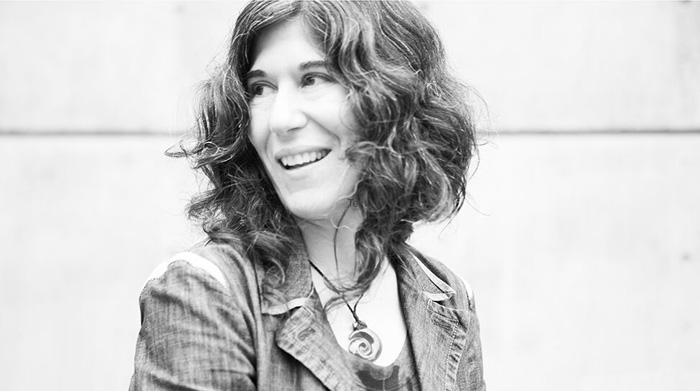
If you don’t think someone fresh off an Oscar nomination would spend five years to follow her critically acclaimed fictional narrative with the first feature-length documentary of her career, you don’t know Debra Granik. When I interviewed her back in 2010 in support of Winter’s Bone, she was already talking about documentary observation as being key to her work. After all, that movie and her debut Down to the Bone both utilized real people from the towns in which she filmed for visual and contextual authenticity. One of those locals—Ronnie Hall—made enough of an imprint to keep Granik’s attention well after her cast and crew left Southern Missouri.
Nicknamed Stray Dog, Hall proves a captivating soul who was much more than outsider preconceptions allow. On the surface he’s an aging biker who lives in and owns an RV Park. Beneath that exterior, however, is a Vietnam veteran grandfather that recently married his new love, moved her and her sons to America from Mexico, provides a sympathetic ear to those currently battling the effects of war, and generously gives tenants/friends extra time to pay rent due to the scarcity of livable wages in their area.
Granik sifted through hours of footage to project her subject onscreen, uncensored and untouched. Everything moment is authentic—every emotion, regret, and joyful smile. She dismantles stereotype through Hall, showcasing a man constantly looked down upon by those who fear his appearance or question his convictions to be the kind-hearted hero he always has been to those who know him.
The Film Stage: When did you know Ron’s story was one you wanted to help tell?
Debra Granik: Meeting him in his own landscape. Going to his RV Park to say goodbye to him after Winter’s Bone and seeing him greet us with four small dogs in his arms and seeing the friends and neighbors that he had recruited to help out on Winter’s Bone living right around him [there]. It was a scrappy landscape, but a lot of responsibility was being taken to make sure the ship would sail. I instantly became attracted to this person that I felt was connected to a very rich web of life—his existence had a large amount of strands of contemporary American life in it.
Themes: surviving in the context of very tight financial resources; warrior culture. We would later learn about the connections to his biological kin. He let it drop that he fancied a woman in Mexico, where he had really connected profoundly with Alicia [Soriano Hall]. After seven years of living alone in the smallest RV with his dogs, he was flummoxed by new feelings about possibly wanting to cohabitate with a female Homo sapien. So he was toying with that. He wasn’t sure he could go there and he seemed challenged by it.
The bikes were parked in the yard and he let me know he was looking forward to performing a pilgrimage from the middle of the country to the Washington DC Vietnam Memorial. Later that afternoon one of the other bikers with a big presence, Whitey, kind of sauntered into the place. We talked about the term hillbilly. We talked about so many different topics and I just found him to be a rich storyteller and a deep thinker. Hands down I was drawn to the person, but I was also drawn to the wealth of material that was around him.
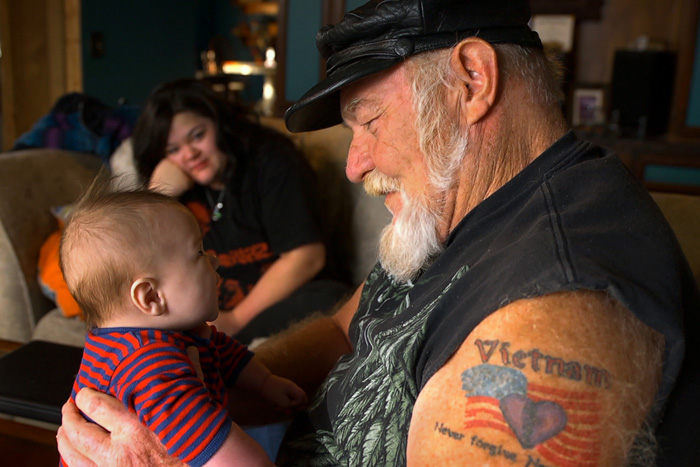
So you were ready to begin filming his life before the prospect of Alicia coming to the US had been dreamed up?
I was definitely interested and I didn’t know that Alicia was going to play such a large role in the film—in his life. I had never really had a chance to talk to someone who had participated in the Vietnam War as a combat soldier and yet it had been a big part of my awareness of growing up, a big part of things I tried to learn about—the country I live in.
The Alicia aspect was something Ron chose to implicate himself in. A new chapter of his life that involved being responsible to and connecting profoundly with another set of people from another country and it did take on a major part of the film. I think sometimes with a documentary you kind of take a pledge to have to be receptive to stuff that enters the story even if it wasn’t something on your shot list. You know?
When I spoke with you five years ago in conjunction with Winter’s Bone‘s release you had talked about your short film Snake Feed and how it began as a documentary before your leafing through the material and seeing new tangents and directions became overwhelming. What was different this time that you chose to keep Stray Dog a documentary as opposed to a fictionalized narrative?
Oh gosh. I guess in this sense I got my cake and icing because the cast was made by fate. The cast is a group of people who live in a particular setting and a couple miles down the road is another set of bikers and then at the church there’s so-and-so and the community center there’s [this person]. So the cast is given to me by life. Not given to me—that sounds so crazy. It presented as a photographic subject by life itself.
Ron has lines I couldn’t write. Ron has a way of speaking and so do his friends. I couldn’t write that—especially as an East Coast person who speaks the way I do. The dialogue is being written by the people who are speaking it and feeling it and understanding it.
The temptation is of course to go back and make a fiction with all the stories I couldn’t tell because they happened off camera. The temptation is huge to go down and make a little every day life comedy slash realistic—I wouldn’t say comedy—a neo-realist film with humor and joie de vivre. That temptation is huge. But in this case—I guess maybe the onslaught of material that was created by life [made it so] I didn’t really have time to fantasize whether I could somehow fictionalize it in the making, in the time, in the throes of it. In retrospect, when I see the scenes we’ve cut, I’m like, “Oh my God. We could make a little narrative out of the scenes we cut.”
From A to Z, name every letter in the alphabet and there was a scene that corresponds that didn’t fit. It would be much more of a pure family comedy because there were a lot of things about getting along and bizarre habits you don’t understand about another person and stuff like that. Not bizarre, I want to say quizzical.
I think I will struggle forever about when it’s time to be in documentary mode and when it’s time to slow it down, recreate, and try to fictionalize. And there’s a third rail which you hop onto that’s a real mixture of right between where you’re asking people from everyday life—people you’ve met who don’t consider themselves actors—to perform certain kind of skits that they do well at. I would like to try that going forward. I really would.
There were moments when I was trying to film research material for a narrative fiction set in Baltimore and I was just, “Oh my God. I can’t do better than the documentary really.” But then at the same time I remember that there were some things I missed. I got tortured because these guys could do a great scene about being in a group home, these teens in Baltimore. They know the deal and we can totally recreate it. Add something even. I was talking to myself, “We could say that this is New Year’s Eve in the group home.”
What I’m trying to say is that at any given moment I [don’t feel] at ease with how to determine whether the material is best suited as a narrative or a documentary. When it’s an adaptation of someone’s novel it is so much more of a clear path for me.
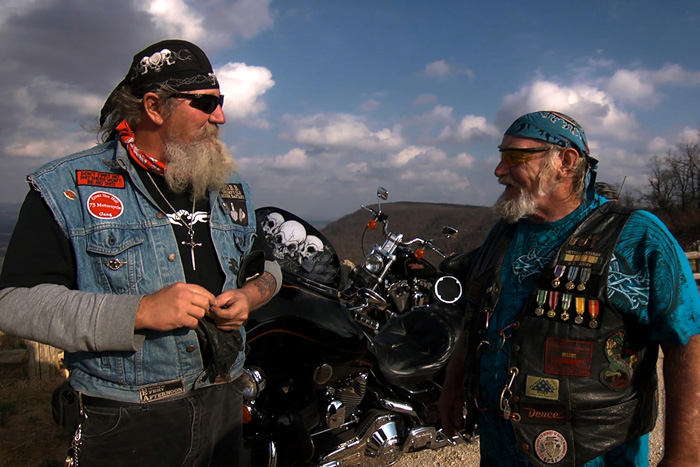
I thought it was a great choice on your part to only show real life unfolding without any talking heads steering us through his life. Was that a conscious decision from the beginning or had you filmed such interviews before deciding they didn’t work?
We did indeed. It was not a conscious decision—we went at it every which way. We used the three major strands of technique: copious on-camera interview with the idea that you may use it directly or as voiceover. We were using every technique that we knew of—and there aren’t that many—to see how much anecdotal material, remembrances, consternation, and questioning we could record. We even tried a technique where we were not present. We would give Ron a voice-recorder in the service of possibly creating certain kinds of voiceover he could only say when we were not present.
It became very hard very quickly to mix them, which was so interesting to both [myself] and the editor [Victoria Stewart]. She did a great job stringing out all the live action scenes we did, so we had this assembly. And then we had another whole strand with pieces of the interviews that we thought were stellar—either really well worded or head-banging or confounding or interesting or provocative. So we had the “Best Of” the interviews and the “Best Of” the live scenes and we thought, “Okay. No-brainer. We’ll just integrate them.” Never shall the twain—at least not in this film. They didn’t marry well. It was weirdly awkward to go to him sitting still after we had seen him bike across the country or something. And we were like, “Why?”
We did try the voiceover and it turns out the voiceover did find a home in the shorter cut for television. Not extensively, but sort of a short cut with some insights to basically give some backstory in the way it needs to happen when a viewer does not have time to ramp up in the shorter confines of a broadcast presentation. The voiceover was helpful to kind of detonate the film that way.
So yes. You had phrased it correctly. It was not intentional and your question speaks to that. We felt that in the end the material dictated that we would choose the live action cutting.
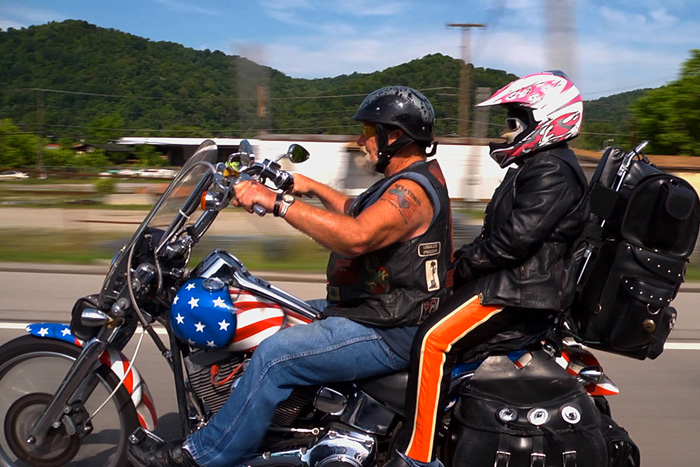
Did Ron have any ambitions for what part of his life the film would show? Or did he just give your carte blanche to find the story in the process?
Ron did not make any stipulations about the footage that we had gathered. About what we could or could not use, in that sense. The burden about what things we felt would be a disservice to him or that he could regret—we had to be aware of that. There’s nothing so devastating and weird and diabolical we chose to delete, but on certain subject matters I think people would jump [to conclusions] not knowing the full context—which was impossible to portray at times.
The Second Amendment for example. There was a lot of material that we recorded about gun culture and gun country and Ron was very willing to have a dialogue with me even though I come from a very different cultural perspective on the role of firearms in everyday life and whatnot. He was very willing to have a sustained and respectful conversation with me. But it’s its own subject matter. We tried to make a strand about guns and their role and we had footage. We took that out in the end because our theme—our wall chart of our themes and all our note taking about where we felt the film was headed was very replete. It was like one or the other: guns or Ron trying to figure out how his family was going to make it. Like with his granddaughter and stuff—themes about surviving certain kinds of poverty and living in it versus a complicated set of questions and discussions about guns.
Ron put it all out there. We made decisions about where we thought our precious minutes of content should occupy the space we were given to make the film. Which is a palatable running time. That is one of the big responsibilities you have as a documentary filmmaker. You can get close to someone and yet you also know you didn’t get close to throw them under the bus. You didn’t get close to them so you could re-present certain things that you might expect without giving it due diligence. If that content was going to be in the film we would have had to really take the space so the viewer understood how nuanced the discussion was.
I feel like maybe I’ve been so vague that I’ve confused you.
No, not at all.
Okay.
With what you just said about content—how important was it to show this “softer” side of bike culture when shows like Sons of Anarchy are ratcheting up the violence quotient?
Yeah. You said it. After Sons of Anarchy I want to see when bikers—I want to see what works with it. Why it performs such a rich, therapeutic function in the lives of many American men. I want to see why veterans seek out the velocity and riding in a flock and having a mission. Even if the mission is just to go down to a beautiful park in Arkansas to have a lyrical afternoon. I want to see what it looks like when bikers serve each other coffee. I want to see when they get real about their changing bodies and their sexual prowess. I want to see every time that they—Ron would describe how responsible it is when you go with a bunch of brothers to a shindig and if someone gets inebriated. What it’s like to lift your brother onto your own bike; find a way to get the other bike home. There’s a lot of physicality and that’s—
TV can turn up some of the suspense, some of the darker stuff, some of the stuff that keeps us jolted, right? Increments of violence. And then sometimes films—documentaries and other types of filmmaking—are supposed to show the other moments. Sons will give the jolts, the intensity of what it’s like to be even sometimes sadistic or being really kind of cool and documentary makers are sometimes supposed to go out and find the moments of hope or the moments that fall between the cracks of suspense or commerciality.
It’s important because on one level when you feel like you share the planet with a whole array of people, when someone’s willing to let you know other aspects of what it’s like to be a biker it’s a rich opportunity. I felt really compelled to take the invitation because I only know the other stuff. I only know what it’s like to kind of be scared at a rest stop and want to walk on the other side of the parking lot or be freaked out or be upset. I only know sort of the image of the one-percenter. Now I feel much more inclined to go up to someone and compliment their bike if they’ll have it. They won’t always take it. [Laughter] See if there is any moment of common ground. There isn’t always, but sometimes there is. Some people—it’s our mission to look for the sometimes.
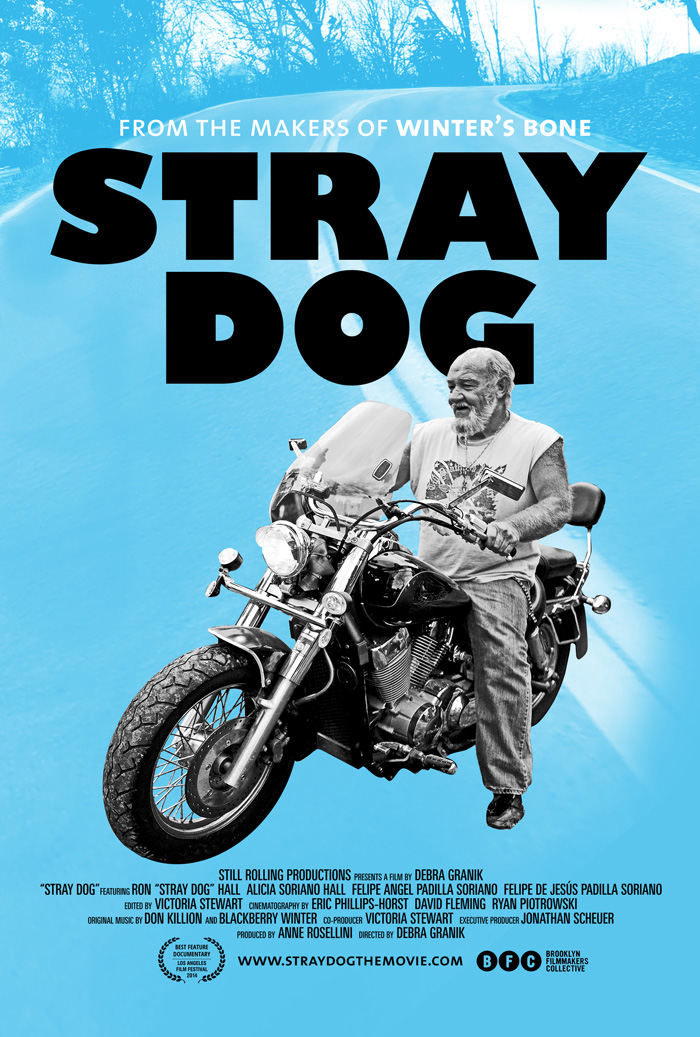
Stray Dog opens in NYC on Friday, July 3rd and LA on Friday, July 24th.
